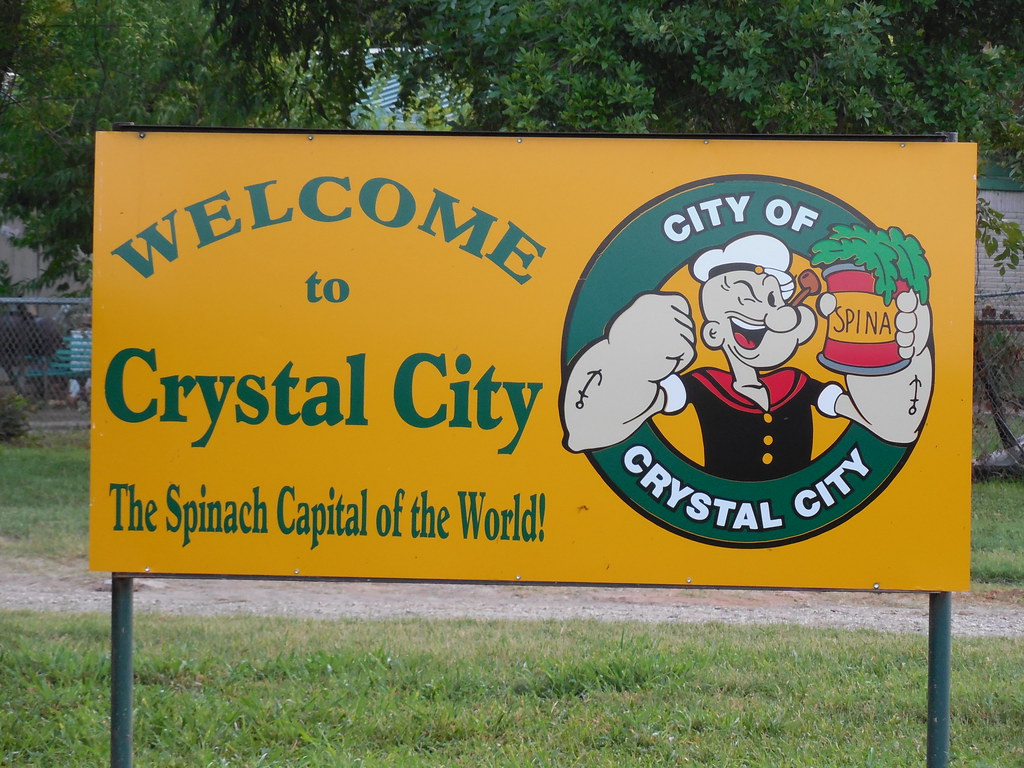Familiar place names always catch my attention. Often they share a bond with locations near my home in the Washington, DC area. Several years ago I wrote about one such situation in A Tale of Three Ridges. This time Crystal City served as the common denominator.
Crystal City, Virginia

Virginia’s Crystal City abuts Ronald Reagan Washington National Airport. However, most flyers probably never notice it. Minds tend to wander across the Potomac River to the famous monuments on the National Mall. However, a glance in the opposite direction would show large blocks of office towers and apartments instead. That skyline marked Crystal City.
Crystal City didn’t exist until the Cold War. This unplanned creation handled the overflow of Federal agencies, government contractors, and residents. Jackson City once stood there in the mid 19th Century, providing space for two forts during the Civil War. Then the area declined.
“After the war ended, it devolved into a seedy red-light district, complete with saloons, betting parlors and brothels — most of which were burned down in 1904 by a self-appointed cleanup crew known as the ‘Good Citizens League.’ From those ashes rose an industrial sprawl of brickyards, warehouses, iron-fabricating factories and junk lots that spread south.”
The revival began with the construction of the Crystal House apartments (map) in the 1960’s. It happened to feature an ornate crystal chandelier. That started a naming trend for new construction in the area — everything became Crystal something-or-another.
I used to work in Crystal City. The old American Meridian ran directly through it. I drove across it every day, living in the former Western Hemisphere and working in the former Eastern Hemisphere. Twelve Mile Circle even sponsored a Happy Hour gathering back in 2010 at a Crystal City pub almost directly atop the Meridian. I had fond geo-geek memories of the place.
Crystal City, Texas

The Crystal City in Texas provided the excuse for this article. My genealogy hobby uncovered a distant relative in that town in Zavala County. He lived there in 1910, working in a livery stable. It seemed odd that the town shared a name with a place in Virginia. The city explained its origin:
“Two land developers, Carl F. Groos and E. J. Buckingham, developed the town in the early 1900s. In 1905 they purchased the 10,000-acre Cross S Ranch, sold off most of the land as farms, and platted the townsite of Crystal City, named for the clear artesian water of the area.”
Usually when I describe little places like this I struggle to find much of historical value. Crystal City defied that trend. It became known for several reasons in the last few decades. First, it served as one of the largest internment camps for Japanese-Americans during World War II. Then it received a lot of coverage in early 2016. Federal agents arrested almost every top official. They allegedly took bribes from a guy named Mr. T. who ran an illegal gambling scheme. Those indicted included the mayor, mayor pro tempore, city manager and two of three councilmen.
I preferred to recognize Crystal City for its motto, as the “Spinach Capital of the World.” They even placed a statue of Popeye the Sailor Man in front of city hall (map) and included him on the city seal.
Crystal City, Missouri

However, the fun didn’t end there. I discovered additional Crystal Cities. One of them landed in Missouri (map). That city said,
“Around 1843 an Eastern company conducted a search in this area of Missouri, looking for land with valuable minerals. In 1868 Forrest Sheppards, a mineralogist and geologist, located silica (sand rock) near the mouth of Plattin Creek. The sand was of superior quality for glass manufacturing. What followed was an enthusiastic pursuit of development, and The American Plate Glass Company was founded here by Captain Ebenezer B. Ward of Detroit, in 1871.”
Crystal City began as a company town named for the glass. The factory remained until 1990, or nearly 150 years. However, the company controlled every facet of life for the first few decades. An independent town grew immediately to its west, with privately owned homes and business, particularly saloons. The two came to be known as The Twin Cities, Crystal City and Festus (Minnesota’s Minneapolis and St. Paul might disagree). Festus supposedly got its name from a lady who opened her bible onto a random page. Her finger landed on Acts 25:1 and the name Festus. This replaced Tanglefoot. It didn’t seem like much of an improvement.
They could change Crystal City to Cletus and create the perfect hillbilly combination, though.
Crystal City, Manitoba
Canada included a Crystal City too, in Manitoba.
“Greenway proceeded to map a street layout for a ‘city’ south and east of Crystal Creek. The idea of our ‘town’ being a city in the then future was not so far-fetched. Crystal City had a population of 230 plus, with Brandon recording around 100, while even Winnipeg numbered in at 400 in 1878. Greenway had seen Ontario towns with less, become great, simply due to time, immigration and internal growth. The dream for the town was to become a city, a leader in the southern prairies, maybe even the provincial capital.”
Of course, this Crystal City never grew into that great city. Fewer than 400 people live there today.

Leave a Reply